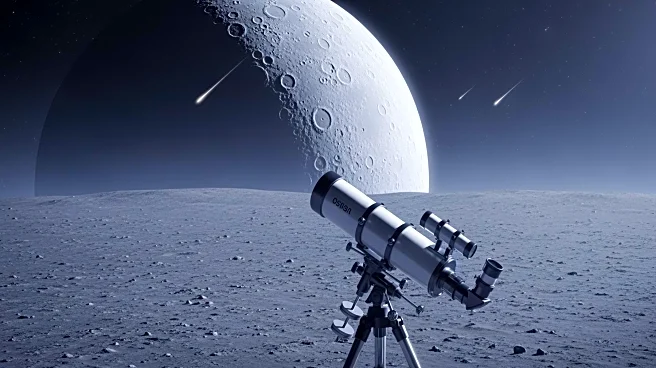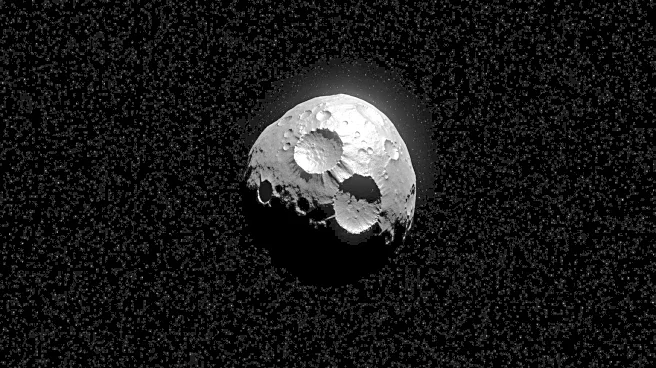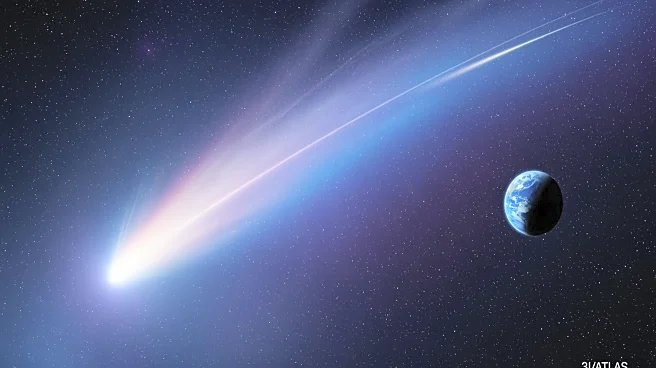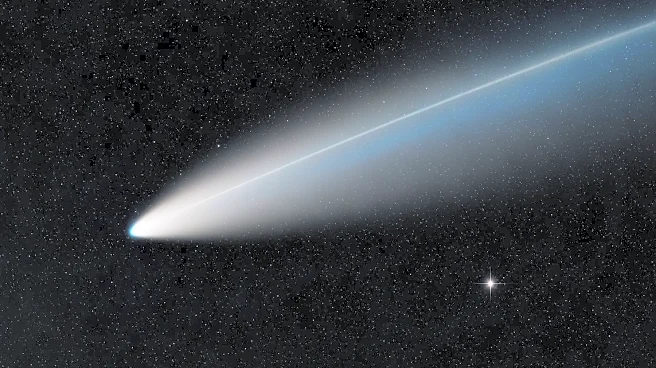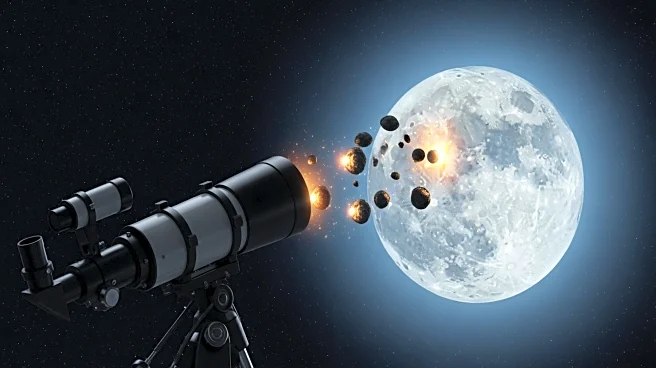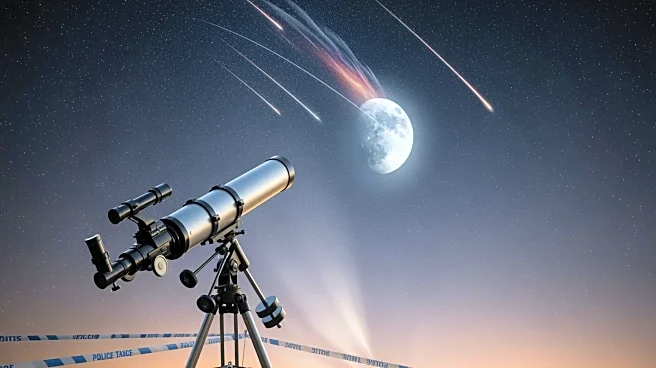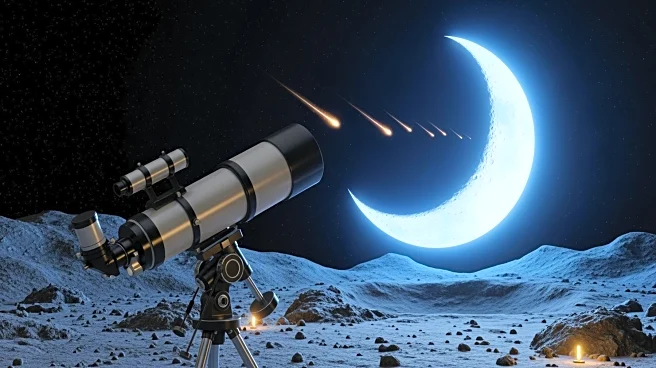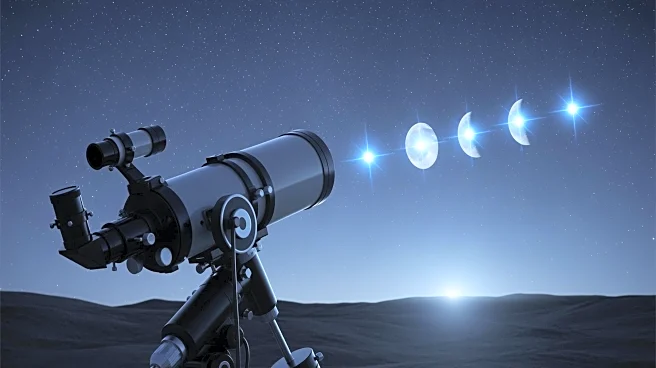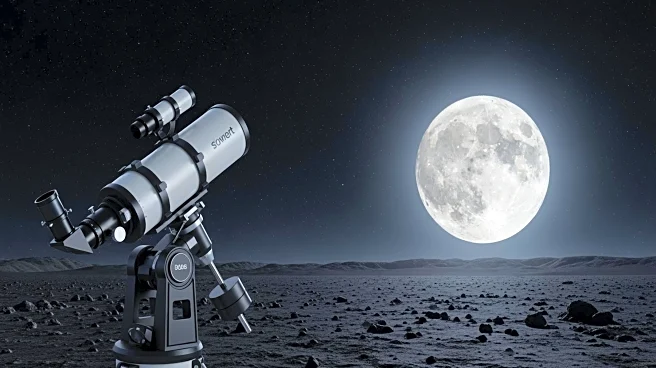What's Happening?
Daichi Fujii, an astronomy curator at the Hiratsuka City Museum in Japan, captured two meteor impacts on the moon on October 30 and November 1. Using his telescope, Fujii recorded flashes on the moon's surface, which are believed to be from the Southern
Taurids or Northern Taurids meteor showers. These observations are significant as they provide data on the frequency and energy of lunar impacts, which can inform the design and operation of future lunar bases. Fujii has been observing lunar impacts since 2011 and has documented 60 such flashes to date.
Why It's Important?
Understanding lunar impacts is crucial for future space exploration and the establishment of lunar bases. The data collected from these observations can help assess the risks posed by meteors to astronauts and equipment on the moon. As NASA's Lunar Impact Monitoring program highlights, knowing the frequency of these impacts is essential for planning future moon missions. The moon's lack of atmosphere means meteors can directly impact its surface, creating craters that can be studied to understand the history and frequency of such events.
What's Next?
Future space missions may incorporate findings from these observations to enhance safety measures for lunar bases. Continued monitoring of lunar impacts will provide valuable insights into the moon's environment and help refine strategies for mitigating risks associated with meteor strikes. As the lunar impact rate remains uncertain, ongoing research and observation are necessary to improve our understanding of these phenomena.
Beyond the Headlines
The study of lunar impacts also offers insights into the broader dynamics of celestial bodies and their interactions. These observations contribute to our understanding of the solar system's history and the processes that shape planetary surfaces. The ethical considerations of space exploration, including the preservation of celestial bodies, may also be influenced by findings from lunar impact studies.
